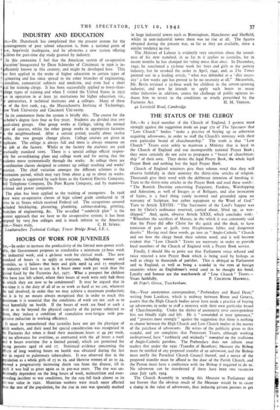INDUSTRY AND EDUCATION
11.
• Dunsheath has complained that the present system for the couragement of post school education is, from a national point of ew, hopelessly inadequate, and he advocates a new system offering Rides for part-time day study granted by industry.
In this connexion I feel that the American system of co-operative ucation•inaugurated by Dean Schneider of Cincinnati in 1906 is in- 1 ciently known in this country, and might be developed here. This a as first applied in the realm of higher education to certain types of igineering and has since spread to the other branches of engineering, s-Arnalism, commercial subjects and medicine, and even had a short s 'al for training clergy. It has been successfully applied to lower-than- s •liege types of training and when I visited the United States in 1935 as in operation in at least 3o institutions for higher education, viz., universities, 8 technical institutes and 4 colleges. Many of these a e of the first rank, e.g., the Massachusetts Institute of Technology, ew York University and Cincinatti University.
In its commonest form the system is briefly this. The course for the chelor's degree lasts four or five years. Students are divided into two ual-sized groups. One group works at College, taking the normal pea of courses, whilst the other group works in appropriate factories
• the neighbourhood. After a certain period, usually about twelve e eeks, the two groups change places. College courses are given in Y uplicate. The college is always full and there is always someone on e job at the factory. Whilst at the factory the students are paid tactically standard rates. There is a special college official respon- ble for co-ordinating plant and college work and for seeing that the udents move systematically through the works. At college there are rdination classes designed to connect up college teaching and works' ractice. The chief variation amongst the different schemes is the
e ernation period, which may vary from about 4 up to about 19 weeks. s e scheme is supported by such firms as the General Electric Company, ll Telephone Company, Du Pont Rayon Company, and by numerous ailroad and power companies.
The plan has been applied to the training of youngsters. In 1928 ere were co-operative classes of high school grade conducted in 78 ties in 21 States which received Federal aid. The occupations covered
• eluded bricklaying, plastering, plumbing, cabinet-making, printing, ranches of engineering, &c. The so-called " sandwich plan " is the a earest approach that we have to the co-operative system; it has been y opted by very ,few colleges and is much inferior to the American


























 Previous page
Previous page